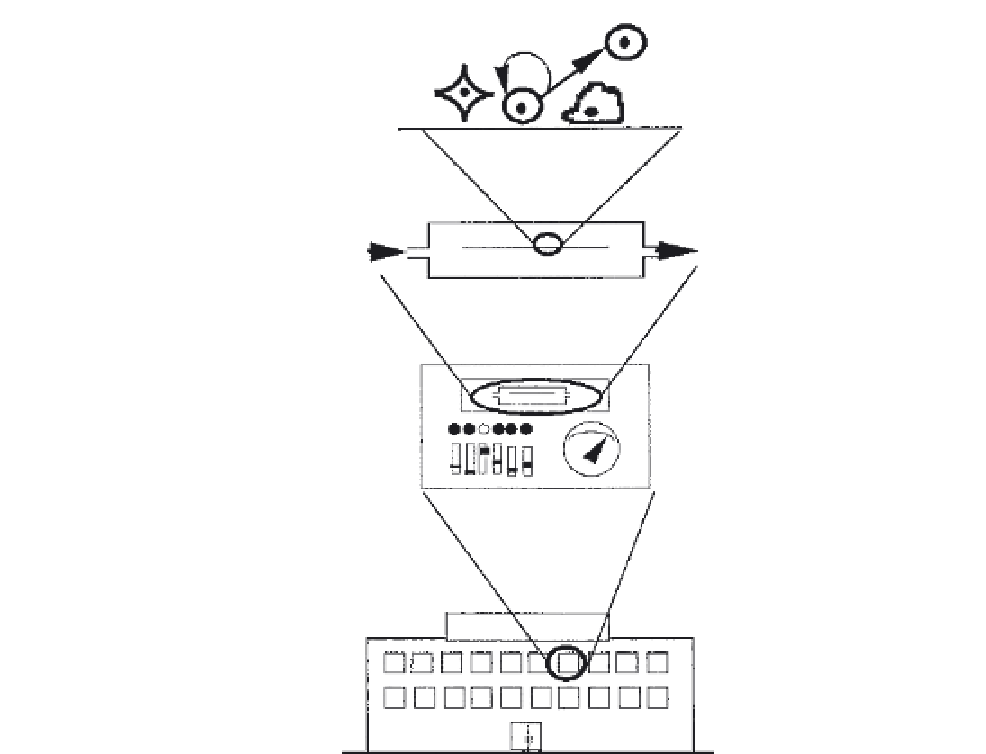Biomedical Engineering Reference
In-Depth Information
Progenitor
Cell
Mesenchymal
Accessory Cell
100 microns
The Tissue
Microenvironment
Hematopoietic
Accessory Cell
Stem Cell
10 cm
The Bioreactor
10-100 cm
The Automated Cell
Culture System
General Hospital
1-10 meters
The Cell
Manufacturing
Facility
FIGURE 6.1
The four principal size scales in tissue engineering and cellular therapies.
This chapter concentrates on items 1 and 2, although some of the challenges faced with
items 3 and 4 are discussed in Section 6.6. For an overall understanding, items 1 and
2 are further illustrated in Figure 6.2 from the viewpoints of “every cell in the body.”
In the center of Figure 6.2 is a cell. The figure represents the environment that influences
every cell in the body. This environment includes the chemical components of the
microenvi-
ronment:
the extracellular matrix, hormones, cyto/chemokines, nutrients, and gases. Physi-
cally, it is characterized by its geometry, the dynamics of respiration, and the removal of
metabolic by-products. From these characterized observations, expanded details of each com-
ponent will be discussed such that biological understandings precede the physical considera-
tions. Finally, both biological and physical environments are combined to help integrate
research and clinical activities—for the future development of tissue engineered products.
6.1.2 Cellular Therapies, Grafts, and Extracorporeal Bioartificial Organs
The development of
cellular therapies
initially arose from advancing knowledge within
the cell and molecular biology science domains. Transferring these developments into the
clinical arena is a design challenge that requires organized culture control and exploitation

